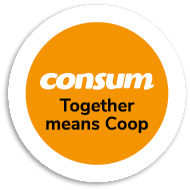Kaizen method: what it is and how to implement it
Discover the Kaizen method, a continuous improvement strategy to optimise personal or business processes. Learn how to implement it.
KNOW YOURSELF
Share

Improving gradually, step by step. This is one of the central points of Kaizen, a methodology whose origins date back to Japan during World War II. At that time, Japan was facing a complex situation and its industry had many challenges ahead. In an effort to boost the sector, various seminars were held, and using the Training Within Industry (TWI) programme from the United States as a starting point, this methodology emerged, proposing small changes at all levels, both economic and social.
Nearly a decade later, in 1960, Japan regained its stability and was positioned as one of the most stable economies globally, something clearly demonstrated by the success of this philosophy. But... what exactly is Kaizen and how can it be applied? Let’s resolve that.
What is the Kaizen method?
Kaizen means ‘improvement,’ and its roots reflect this. The word is formed by joining two concepts: kai (meaning ‘change’ in Japanese) and zen (meaning ‘goodness’), suggesting that this beneficial improvement will be achieved progressively. The Kaizen method specifically involves carrying out a series of simple actions to identify problems and provide solutions to resolve them. The goal is continuous improvement.
Kaizen offers many benefits to businesses, as it suggests improving standards such as quality, costs, or productivity. Rather than taking drastic measures, Kaizen advocates that small, continuous changes yield better results than one large change, a philosophy that seeks gradual continuous improvement. The results show that productivity and quality improve substantially, and that's not all: it also encourages employees to take more responsibility for their areas and even for their own personal growth. Companies such as Toyota, Samsung, and Nestlé use this methodology.

Example of Kaizen method
A good example of Kaizen is its implementation in the business sector through the following aspects:
- Continuous improvement of processes: Kaizen can be used to constantly review and improve production or service processes, as it allows for the reduction of unnecessary steps and optimises workflows.
- Staff training and development: This methodology also promotes the continuous improvement of human resources through workshops, learning opportunities or training programmes aimed at enhancing skills and knowledge.
- Employee participation: Encouraging employee participation in decision-making and idea generation is one of the central aspects of Kaizen. This can be done in many ways, such as brainstorming sessions, suggestion boxes or regular team meetings.
- Quality improvement: According to the Kaizen philosophy, implementing stricter controls, customer feedback and regular testing can improve the quality of services or products.
- Cost reduction: The operational efficiency promoted by Kaizen also helps reduce costs, improve logistics, or once again, optimise resources.
- Efficient and safe work environment: Over time, Kaizen not only reduces workplace risks by promoting a more efficient and safer environment, but also enhances employee well-being.
- Adaptability and flexibility: Kaizen encourages companies to be more adaptable and flexible in the face of change. This can manifest in many ways, from adopting new technologies to adjusting commercial strategies to meet changing demands.
When it comes to applying the Kaizen method, there are several stages to consider when implementing it. The first is selecting the issue based on objectives; the second, forming a multidisciplinary team; the third, analysing data; the fourth, gembutsu gema (determining the root causes of the problem to address them); the fifth, creating a countermeasure plan with implementation dates; the sixth, monitoring and evaluating results; and the seventh, controlling and recording whether the problem has been solved after several months, using these changes for similar situations in the future.

How to implement the Kaizen method in your routine?
Kaizen’s success is such that, in addition to business settings, it can also be applied to personal routines. To implement Kaizen in your daily routine, you can follow these steps:
- Plan. First, establish a goal and develop a way to achieve it. The goal can be more or less ambitious, but the most important thing is to define the small change you want to make.
- Execute. To start making changes, you can use apps designed to help you develop habits or visually track your progress on a whiteboard. Another option is to keep a daily record of how you feel or what changes you notice as you progress.
- Check. It’s essential to review the process and find out what changes are happening or not. Without judgment, review objectively and adjust as needed to achieve your goal.
- Act. Maintain the change. Once you’ve achieved it, you can consider setting another goal. Remember, routines don’t change overnight; you must gradually get used to them.
Another example of how Kaizen, with its step-by-step methodology, can change details in your routine. You will also improve effectiveness, concentration, and satisfaction as you reach the goals you set for yourself.






